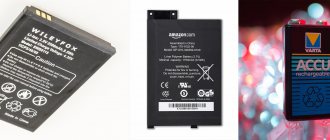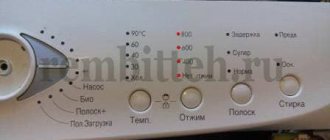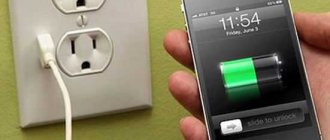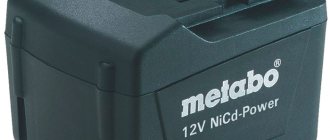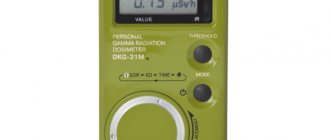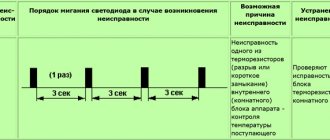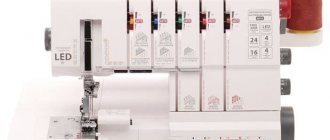What to do if 18650 does not charge
A situation where the battery does not charge occurs after lithium-ion cells have been stored for a long time or have been overcooled.
Most 18650 cells are equipped with a controller that protects the battery from overcharging and prevents overheating and explosive destruction during operation.
The power controller disconnects the battery banks from the terminals when the voltage drops below the permissible level of 2.4 V - the measured voltage at the terminals of a non-working battery is 0 V.
You can increase the voltage on the battery and limit the maximum current by connecting a resistor to the circuit by assembling a circuit from a telephone power supply with a current above 0.1 A, a 300-1000 Ohm resistor with a power of 0.5-1 W and a voltmeter. We plug the charger into the network for one or two minutes - we control the voltage, after it reaches 3 V, we turn off the circuit and put the battery on charge.
Should I charge it before long-term storage?
Haven't used your screwdriver battery for a long time? Experts give the following recommendations.
- Before storage, nickel-cadmium For long-term storage, you need to carry out 3-5 full charging/discharging cycles.
- Nickel-metal hydride batteries have a higher self-discharge rate, unlike previous elements. Experts advise keeping them charged, and after a long break, leaving them to recharge for a day. The capacity decreases after 200-300 charge-discharge cycles. Partial discharge is allowed for this type.
- Lithium-ion batteries are distinguished by the complete absence of the “memory effect”. The battery can be charged whenever you want. It is not recommended to completely discharge them, as this may disable the protective circuit. They are equipped with special controllers that, at high temperatures, turn off the element to prevent overload. You can store the cell charged only 50%.
RESULTS
RESULTS Li-Ion. RESULTS пÑоизводиÑелÑ. RESEARCH ASSURANCE
RESULTS ² ÑкÑплÑаÑаÑиÑ. RESULTS ¾Ð²Ð°Ð½Ð¸Ðµ нÑжно полноÑÑÑÑÑазÑÑдиÑÑ . RESULTS, RESULTS ¶Ð½Ð¾ бÑÐ´ÐµÑ Ð¿Ð¾Ð´ÐºÐ»ÑÑиÑÑ Ðº ÑеÑи. RESULTS RESULTS. RESULTS, RESULTS RESULTS.
RESULTS RESULTS . RESEARCH, RESULTS ¸Ð½Ð´Ð¸ÐºÐ°ÑÐ¾Ñ Ð½Ðµ загоÑиÑÑÑ Ð·ÐµÐ»ÐµÐ½Ñм ÑвеÑом. RESULTS RESULTS. RESULTS. RESULTS µÑ или ноÑÑбÑк не нÑжно.
How to charge a battery, rules
Lithium-ion batteries are similar to people in that they do not behave the same and work best at temperatures that are neither too hot nor too cold.
These batteries perform better at high temperatures than at low temperatures because the heat reduces internal resistance and speeds up the chemical reaction inside the battery. A side effect of this process is that it puts a strain on the battery, which can lead to shortened life in hot conditions for extended periods.
On the other hand, low temperatures increase internal resistance, which increases the load on the battery and reduces its capacity. Batteries that provide 100% capacity at 27°C are typically reduced by 50% at -18°C and so on.
How to charge Li ion batteries correctly?
Do not discharge completely
Failure to follow these tips and instructions may damage the battery to the point that it becomes unusable. You may also endanger your safety and the safety of others if the battery is not used properly. When combined with a mismatched charger, overheating or overcharging may occur and there is a risk of fire.
Complete discharge is carried out no more than once every 3 months
How to properly charge lithium ion batteries?
Charging lithium ion batteries is very different from charging nickel-cadmium or nickel-metal hydride batteries.
The differences are that lithium-ion batteries have a higher voltage per cell. They also require much tighter voltage tolerances when detecting a full charge, and once fully charged they do not allow or require recharging
It is especially important to be able to accurately determine the state of full charge since lithium-ion batteries cannot be overcharged
Low charge storage
Most consumer-oriented lithium-ion batteries charge to 4.2V per cell, and this allows for a deviation of about ±50mV per cell. Charging beyond this stresses the cell and leads to oxidation, which reduces life and performance. This may also cause security problems.
Charge only with original charger
Charging lithium-ion batteries can be divided into two main stages:
- Constant current charging: In the first stage of charging a lithium-ion battery or cell, the charging current is controlled. Typically, this is between 0.5 and 1.0 C. (Note: For a 2000 mAh battery, the charging rate will be 2000 mA for the C charging rate). For LCO consumer cells and batteries, a charging rate of no more than 0.8 °C is recommended. At this point, the voltage across the lithium ion cell is increased for constant current charging. Charging time can be around an hour for this stage.
- Charge Saturation: After some time, the voltage peaks at 4.2V for the LCO cell. At this point, the cell or battery should enter the second stage of charging, known as saturation charge. A constant voltage of 4.2V is maintained and the current will drop continuously. The end of the charging cycle is reached when the current drops to approximately 10% of the rated current. Charging time can be around two hours for this stage depending on cell type and manufacturer, etc.
Charge efficiency, that is, the amount of charge held by a battery or cell relative to the amount of charge entering the cell, is high. Charging efficiency is between 95 and 99%. This reflects relatively low levels of cell temperature rise.
Do not overheat the battery when charging
There are times when you cannot use the battery for an extended period of time. Here are tips for maintaining maximum battery capacity for long-term storage.
Tools
71 votes
+
Vote for!
—
Vote against!
Among power tools, both household and professional, a screwdriver is one of the most popular. With its help you can not only unscrew and screw in self-tapping screws, but also drill holes. Tools powered by the mains cannot be used always and everywhere, and the cord always interferes with the work. Cordless screwdrivers are free from these disadvantages. You can move freely with them and not depend on the presence of an outlet in the room.
An important element of every cordless tool is the battery, which allows you to work with it autonomously. This is very convenient, but sooner or later every owner of such a power tool faces the question of how to charge the screwdriver battery.
Content
- Types of batteries used to operate a screwdriver
- Features of battery charging
- How long does it take to charge screwdriver batteries?
- Do batteries need to be charged before storage?
- What to do if the screwdriver battery does not charge?
Types of batteries used to operate a screwdriver
Before purchasing new batteries for a screwdriver, you must carefully study the instructions for the device. The tools needed for work can be professional, household and semi-professional. The batteries for them differ from each other in capacity, quality and price.
Certain types of cordless tools are designed for certain jobs, designed for different loads, and therefore they require different batteries. The higher the battery power rating, the longer it can last. For convenience, it is better to have two batteries so that you can recharge the second while working with one. Often a second battery is already included when the tool is sold.
Screwdrivers can use different types of batteries. The most commonly used are nickel-cadmium (Ni-Cd) and nickel-metal hydride (Ni-MH), and more recently also lithium-ion (Li-Ion).
The most common of them are nickel-cadmium batteries, characterized by their compact size, high capacity and reasonable price. These batteries can be effectively charged more than a thousand times, depending on their design, purity of materials, operating conditions, including correct charging. However, these devices have a so-called memory effect, and if they are charged without waiting for complete discharge, the battery capacity will gradually decrease. In addition, the production of such elements is so toxic that the European Union has abandoned it on its territory.
In second place in terms of frequency of use are nickel-metal hydride batteries, which represent a new generation of such devices. From an environmental point of view, both the production and disposal of these batteries are practically safe. The advantages of batteries of this type include the fact that they have a less pronounced memory effect, and the disadvantages are a high self-discharge current. These batteries must be kept charged and must be fully recharged when not in use for more than a month.
Recently, more powerful lithium-ion batteries have been used for cordless tools. They also do not have the disadvantage of a memory effect, which requires periodic discharge cycles to restore capacity. However, these batteries do not tolerate low temperatures well, and it is not advisable to work with them in frosty conditions. Despite the fast charge and high capacity, they are not yet very popular, since their price is quite high.
Features of battery charging
How to properly charge a screwdriver battery so that it lasts as long as possible?
Batteries must be charged before first use as they will discharge during storage. To ensure that the battery capacity of the screwdriver reaches the maximum possible for a nickel-cadmium cell, it is recommended to charge it three times and then discharge it. Thus, since the new battery does not have full capacity, it must be brought to its working full capacity. After this, the batteries will need to be charged as soon as their power reaches a minimum. Lithium-ion batteries are easier to use. They do not have a memory effect, so you don’t have to let them fully discharge and charge them when it’s convenient.
When charging, you need to take into account the optimal temperature conditions of the process. It is better that the ambient temperature is above ten degrees and does not exceed forty. During charging, batteries sometimes get warm, but this should not happen, since overheating negatively affects their performance and they need to be cooled. It is not advisable to leave batteries in the charger. And it’s better to store them by disconnecting them from the screwdriver, separately from the tool itself. If the batteries are not used for a long time, they should be recharged once a month.
It is better to buy batteries at specialized sales points. Proper operation will help increase their service life. It is not advisable to completely discharge the elements during operation until the engine stops. The fact that they need charging will be indicated by their noticeably reduced performance.
How long does it take to charge screwdriver batteries?
As a rule, the charging time for a screwdriver battery is indicated in the instructions for the tool. These recommendations should be followed carefully. Often the charger has a special display system that helps you understand how the charging process is progressing. Thanks to this, you can easily determine how long to charge the screwdriver battery. When charging is completed, you need to interrupt it in time to avoid damaging the batteries. On average, a battery charger for a screwdriver can recharge in about half an hour to 7 hours. Practice shows that a Ni-Cd battery with a capacity of 1.2 Ah can be charged with a current of 250 mA for about seven hours. The charging current is maintained using the AC adapter.
Please note that there are two types of battery chargers - regular and pulse. A standard conventional charger is more often used in non-professional tools, it charges the battery in about 3-7 hours. Pulse – more suitable for professional mechanisms. Thanks to it, the battery's performance can be restored in a maximum of an hour.
Do batteries need to be charged before storage?
If a cordless tool is not used for a long time, experts advise paying close attention to the battery cells.
It is recommended to discharge nickel-cadmium batteries before storage, but not to zero, but to a state where the tool stops working at full capacity. During long-term storage, to restore the battery capacity, you need to perform 3-5 complete cycles of discharging and charging it. During operation of the tool, it is also advisable to ensure that the battery is not partially, but completely discharged before charging.
Nickel-metal hydride batteries have a higher self-discharge rate than previous cells. They are recommended to be stored charged, and after a long “rest” to be charged for about a day. For this type of battery, partial discharge is preferable. Their capacity decreases after 2-3 hundred charge-discharge cycles.
Lithium-ion batteries, characterized by the absence of a “memory effect,” can be charged at any time, no matter what their level of discharge. These batteries have the lowest self-discharge rate with high capacity. It is not recommended to completely discharge them as this may cause the protection circuit to be disabled. Power tools with such batteries are equipped with control electronics that, when the temperature or voltage increases, disconnects the element from the load. It is recommended to store these batteries at 50 percent charge. The number of charge-discharge cycles does not affect the capacitive characteristics of the elements, however, their service life is limited by time and is about two years.
What to do if the screwdriver battery does not charge?
If the screwdriver battery does not charge, perhaps the reason should be sought in its wear or malfunction of the charger. However, often the problem lies in poor contact between the battery terminals of the screwdriver and the charger, as they become unbent over time. In this case, you can disassemble the charger and bend its terminals.
In addition, after some time of use, both the battery contacts and the charger contacts can oxidize and become dirty. Even minor changes of this nature may prevent the batteries from charging properly. This usually results in a significant reduction in both the charging time and the operating time of the cordless power tool itself. To prevent this from happening, you need to periodically wipe the contacts of the battery, the screwdriver battery charger and the tool.
Unfortunately, the performance of battery cells deteriorates over time. Thus, if nickel-cadmium batteries, most often used in household models of screwdrivers, are used incorrectly, they quickly lose capacity. Experts sometimes advise “overclocking” such batteries. The battery pack is disassembled and the problematic elements are identified. After this they need to be charged. What current should I use to charge the screwdriver battery in this case? Experts recommend first charging such elements with a higher current than required, then discharging them and charging them again, but with a low current. If the electrolyte in Ni-Cd batteries has not yet evaporated, such “therapy” may help bring them back to life.
In addition, you can restore one battery pack from two that have partially lost capacity by selecting entire “banks” from them and soldering them together. After this, to equalize the charge, you need to fully charge and discharge the restored unit several times.
Also, the reason that the battery is not charging may be the temperature sensor (video).
What to do if the battery does not charge
If the above methods did not help, then we recommend that you familiarize yourself with the following methods on how to revive a 18650 battery.
We advise you to study What is potential difference
Using a special charger
This action is carried out using a Chinese copy of the “IMAX B6” charger and a multimeter. This charger is widely available, and it perfectly restores the battery at home. First, you need to check the battery itself by connecting a multimeter to it and setting the device to voltage measurement mode. If the battery is deeply discharged, the multimeter will show low U readings in millivolts.
The essence of the method is that the controller “interferes” with the measurement of the real amount of U in the battery. There are two pins, plus and minus, that go directly from the battery to the controller. The voltage at the terminals is most often 2.6 V, which is a fairly small value.
The tension will rise little by little. This means that the restoration of the li ion battery is successful. After some time, the U value will reach 3.2 volts, and the battery will begin to “sway”. Later it can be charged from the “native” charger.
Using a resistor and a “native” memory
This method is even easier to implement than the previous one. Here it is necessary to bring the “minus” of recharging to the “minus” of the battery. And bring the “plus” through a resistor to the “plus” of the battery. After this, power should be applied and the voltage will increase. It can be raised to 3B; to achieve this indicator, you need to carry out the procedure within fifteen minutes. Once the method is completed, the battery can be tested for functionality.
With a fan
To implement this method, we need a power supply with an output voltage of at least 12V. The “minus” of the fan should be connected to the “minus” connector of the power supply, and its “positive” connector to the plus, and be sure to manually fix it on the battery. When we turn on the device, the fan will start working. This means that current is already flowing in the battery. The procedure should not be continued for long; after about 30 seconds you need to turn off the network. After such restoration, the voltage usually increases to 3V.
Recovering 18650 batteries by charging from another battery
There is a way to revive a lithium-ion battery using another car battery. To do this we need any other 9 V battery, adhesive tape, and also a thin wire. The method is carried out in the following steps:
- The wiring needs to be connected to the contacts of the battery that we want to revive. There must be a separate wire for each contact.
- You cannot connect the plus and minus contacts with just one wire. Because of this, a short circuit may occur, and it will be impossible to revive the battery.
- The connections must be secured with tape, on which you must first make a mark with a marker, which wire will be connected to which contact.
- The wire from the “plus” of the nine-volt battery should be connected to the “plus” of the battery being restored.
- The negative contacts must be connected using the same method.
- We secure all contacts with electrical tape so that the wires do not come loose.
- We wait a certain time and monitor the condition of the battery, it should heat up minimally.
- When the battery becomes warm, immediately disconnect the batteries from the battery.
- We are recharging.
- We check the work.
Through the use of training cycles
This method is carried out to prevent sulfation and also to determine the battery capacity. Such cycles must be carried out at least once a year and the procedure is performed in the following steps:
- The lithium-ion battery should be charged at normal current until it is fully charged.
- We keep it for four hours after the power has stopped.
- We adjust the density of the electrolyte.
- We turn on the charge for 25-35 minutes so that the electrolyte is mixed.
- It is necessary to carry out a control discharge with a constant normal current of ten-hour mode and monitor the time of complete discharge before the voltage drops to 1.7 V per jar
- Battery capacity can be defined as the level of discharge current multiplied by the discharge time.
- After the test discharge has been completed, you must immediately completely discharge the battery. If it turns out that the capacity is not charging, the 18650 battery most likely cannot be fixed.
The main disadvantages of this method:
- Service life is reduced.
- Long recovery time for lithium-ion batteries.
- Huge energy costs.
- Low efficiency of the method.
The nuances of charging batteries of various types
For normal operation of power supplies of any type, it is recommended that they be:
- do not overheat;
- do not recharge;
- do not overdischarge.
To replenish the battery capacity, pulse or standard unregulated charging units are used. The initial charge is carried out with a previously discharged battery. New NiCd cells are recommended to have a 3-fold discharge-charge mode. Subsequently, only a full charge will be needed. The end of replenishment will be indicated by noticeable heating of the battery housing.
Nickel-metal hydride batteries, unlike cadmium batteries, should be stored at a low (30-40%) capacity level. These batteries are more sensitive to heat, so they should not be overloaded during operation. For this purpose, the screwdriver has a torque selection ring. Due to the fact that the Ni-MH battery is subject to the “memory effect”, to restore capacity it is necessary to periodically carry out 4-6 times “training” modes.
After charging the battery, it is necessary to give it time to cool down. Otherwise, this will affect the current output. If during the discharge process a voltage of 0.9 V or lower was reached, some chargers will not “see” the inserted element. On any charger with low currents, you will need to reach the required value, and then continue charging with a standard device.
Lithium-ion batteries can be charged without waiting for them to be completely discharged. The delivered capacity is highly dependent on the ambient temperature. Optimal parameters are achieved in room conditions. Li-ion batteries are sensitive to the amount of charging current, especially at the end of the process. The allowed tolerance is 0.05 V. The average cell takes about 3 hours to charge. Time may vary depending on capacity.
Protected lithium batteries do not suffer from over- or under-charging. The built-in protection board cuts off excessive voltage (more than 3.7 V per cell) during charging and turns off the battery if the charge level drops to a minimum, about 2.4 V. The presence of the device significantly extends the life of the element.
How to properly charge a Li-ion battery
When using lithium-ion batteries, it is necessary to properly charge the device and monitor this process. Charging is carried out according to a special circuit, and control is carried out using additional boards or conventional resistance (resistor).
Two-stage charging scheme
A two-stage charging scheme is the optimal way to charge lithium batteries. In this case, the charge controller has an increased load, but this does not affect the service life of the device.
The execution of the first stage depends on what current the device will be saturated with. The nominal current value is 0.2-0.5 C (C is the battery capacity), and the power is 12.6 volts. A constant charging current is provided by the operation of a charger, which raises the potentials at the battery terminals. At 4.2 V, the battery reaches 70-80% charge, and the first stage ends.
The second stage is characterized by constant voltage and gradually decreasing current. The device maintains the potential at 4.15-4.25 V and controls the current parameters. The higher the indicator, the less current becomes. A value of 0.05-0.01 C indicates the end of the process.
How to control charging parameters
Lithium batteries need monitoring because they operate within a narrow voltage range. The optimal value is considered to be 3 - 4.2 V. The controller is installed in the charger, however, each battery has its own breakers and protection modules. If any parameter is violated, the protective function turns off the can and breaks the circuit.
We advise you to study What is grounding
The controller provides various control functions:
- switches CC/CV modes;
- controls the energy supply in banks;
- supplies a current that compensates for self-discharge;
- measures temperature, preventing battery damage;
- turns off charging.
You can charge the battery without a controller using a resistor connected in series with the device. It is not difficult to assemble a circuit with your own hands if you first calculate the resistance, resistor power and charge current.
Types of batteries for screwdrivers
Charger circuit for a screwdriver.
Before purchasing new batteries for your device, carefully review the instructions that came with it. There are different categories of tools that differ from each other in their characteristics: household, semi-professional, professional. Depending on the type of device, the battery chargers for it also change.
Each of these batteries is designed for a specific type of operation, and accordingly, for different types of loads, so each of them requires a separate charge. The operating time of the screwdriver will depend on the battery power, so the higher it is, the longer the device will work. However, it is still recommended to always have a spare battery with you, which can replace the previous one in unexpected cases.
Usually, when purchasing a new screwdriver, a spare battery comes with the kit. Returning directly to the types of batteries, it is necessary to note the most commonly used of them: lithium-ion, nickel-metal hydride and nickel-cadmium.
Batteries for screwdrivers: lithium Li-Ion, nickel-cadmium Ni-Cd, nickel-metal hydride Ni-MH.
Nickel-cadmium (Ni-Cd) are the most commonly used and, accordingly, the most common types of charges, which are distinguished by their compactness, reasonable price and high energy intensity.
With proper charging, proper operation and, of course, the cleanliness of the materials used in the battery, such devices can be charged more than 1000 times. However, there are some conditions that must be met in order for the battery capacity to last for a long time.
First of all, you need to wait until the battery is completely discharged, since such batteries have a so-called memory effect. Without waiting for complete discharge, the capacity of the energy carrier gradually begins to decrease, leading to a decrease in operating time. In addition, it should be noted that nickel-cadmium batteries are toxic, so you need to be very careful when using them. Under no circumstances should such energy carriers be dropped or hit.
Screwdriver battery connection diagram.
Nickel metal hydride (Ni-MH) batteries are the next most popular batteries. They represent a modern generation of devices based on the latest technologies. These types of batteries are absolutely safe from an environmental point of view. In addition, they are very easy to recycle, meaning these energy carriers are safe for both humans and the environment.
The advantages of nickel-metal hydride batteries include a weak memory effect. This means you don't have to worry about charging frequency. They must be stored in a charged state when not in use. If the interruption in operation is more than 30 days, then it is necessary to completely discharge the battery.
Lithium-ion (Li-Ion) - relatively recently they began to use more powerful batteries based on lithium-ion active substances. They do not have a memory effect, which allows you to charge them at any convenient time, without waiting for complete discharge. Such energy carriers have high energy intensity, which is enough for several working stages.
Lithium-ion batteries are susceptible to the negative effects of low temperatures, so working with them in the winter is not recommended.
This type of battery is not yet particularly popular due to the fact that their price is very high.
Rule 2. Complete discharge still needs to be done once every three months.
With unstable and irregular charging, the average maximum and minimum charge levels in the previously mentioned controller are lost.
This leads to the device receiving incorrect information about the amount of charge.
Preventive discharge will help prevent this. When the battery is completely discharged, the minimum charge value in the control circuit (controller) will be reset to zero.
After this, you need to charge the battery to capacity, keeping it connected to the network for eight to twelve hours.
This will update the maximum value. After such a cycle, the battery operation will be more stable.
How to charge a 18650 battery without a charger at home
Sometimes the question arises - how to charge a 18650 lithium-ion battery using improvised means when the factory charger is not at hand.
How to charge a 18650 battery using a phone charger
We use the power supply from a push-button telephone:
- cut off the plug connecting to the phone;
- remove the wire sheath;
- disconnect and strip one or two centimeters of wires - black “minus”, red “plus”;
- Observing the polarity correctly, tightly attach the bare wires to the terminals using tape or plasticine;
- turn on the charger;
- After an hour of charging, the battery can be used again as a power source.
How to charge a 18650 battery
The simplest charger for a 18650 battery can be made independently based on the TR 4056 - a charge module with linear current and voltage charging.
The connection diagram is simple - the charging current is set by just one resistor.
For charging, use the AC adapter or USB port of any device.
The charging process can be monitored by LEDs:
- red indicator – charging process in progress;
- green indicator - charging is complete.
Deciding on the right tool
Screwdrivers can be household or amateur, professional and semi-professional. Professional ones are not cheap, are reliable, and have a long service life. A household screwdriver looks almost no different from a professional model. In the middle price range there are semi-professional devices that have a capacious battery, powerful and durable.
If the screwdriver operates at minimum power, then it is time to charge the battery using a special charger.
This tool comes with one or two battery cells. A double set will ensure uninterrupted operation, but will add trouble to the owner, as it will require periodic charging for long service. Exclusively occasional use of a screwdriver is a reason to choose a set with one battery.
Your needs will help you figure out whether additional capabilities of the tool are needed, you just need to clearly define for what needs the tool will be needed, because if you already have, for example, a drill or hammer drill, rare or frequent use will allow you to highlight the necessary functions and weed out the unnecessary ones.
Features of charging batteries of different types
There are several types of batteries installed in screwdrivers - nickel-metal hydride, nickel-cadmium and lithium-ion. Each has unique features, and charging is carried out taking into account the recommendations for this type.
Nickel-cadmium
The most popular type of battery, its advantages are compact size, low cost and high capacity. Withstands over a thousand recharge cycles, depending on the quality of the materials used in their manufacture, as well as compliance with the conditions of use.
This type of battery has a significant disadvantage - the memory effect. If you stop charging them before the end, the battery capacity will decrease over time. In addition, their production is very toxic, so some European countries have abandoned their use.
Nickel metal hydride
These batteries represent a new generation of equipment of the previous type; their production and operation are almost completely environmentally friendly. The memory effect in them manifests itself to a much lesser extent. They have a significant drawback - a high self-charging current. Batteries of this type are stored fully charged, and if they are not used for 30 days, it is recommended to recharge them.
Lithium-ion
Batteries of this type are considered the best. They charge quickly and have no memory effect. Such batteries do not need to be completely discharged, and can be connected to power as needed. Disadvantages include high cost, as well as fear of low temperatures.
Lithium-ion screwdriver batteries should be properly charged at temperatures between 10 and 40°C, and if they become hot during this process, they should be cooled to prevent damage.
Features of charging of one type or another + (Video)
The initial charging of the screwdriver is considered a very significant factor, since it determines whether the full charge capacity becomes active or not. Any type of battery has its own characteristics of primary charging. The process of recharging a nickel-cadmium battery is somewhat complicated. Initially, it needs to be recharged three times in a row, and so that the charge capacity remains full.
It is recommended to completely discharge the nickel-metal hydride type for the first time, and also fully charge it. The complete charging/discharging cycle is repeated 4-5 times, then you can safely charge and discharge the battery regardless of how full the container is.
There are no special rules for lithium-ion; the capacity remains unchanged for a long time.
Advice! Do not allow the power supply to overheat above 50 degrees.
Lithium-ion and lithium-polymer, difference
The battery is a dynamic system. Operating parameters vary depending on any component. Let's see how filling with gel instead of liquid electrolyte worked and which is better, a lithium-polymer or lithium-ion battery, what is the difference.
Both types of batteries are characterized by high energy density in small sizes. One cell is capable of delivering a voltage of 3.6 V, twice that of a Ni-Cd battery. There is no memory effect, the battery can be charged at any energy level.
The differences are that when using a liquid lithium-ion battery, the maximum voltage during charging and the minimum voltage during discharge is controlled by built-in protection, the device becomes more expensive. Without protection, a fire and even a scream is possible. Such problems do not accompany the operation of a dry lithium polymer cell. The gel cell can be called a lithium-ion polymer battery. This is a hybrid where a polymer film with a solid composition is used instead of a separator; its effect is enhanced by a conventional electrolyte in gel form. But they call the hybrid lithium-polymer, in the interests of marketing.
General charging rules
When charging the battery of a construction tool, the following rules must be observed:
- The battery should be charged indoors at a temperature of +10…+40°C.
- To prevent overheating during charge accumulation, you can disconnect the battery from the mains from time to time (if you have a built-in thermistor, this measure is not required).
- New drives should not be installed on a screwdriver without first charging and checking with a multimeter.
- You need to recharge the battery immediately after it is dead: during self-discharge, the voltage can drop below a critical level, causing the drive to fail.
- You should not leave the battery connected to the network after restoring the charge: the recommended period of time between the end of the process and shutdown is no more than 20-30 minutes.
We advise you to study Repairing a chandelier with a remote control: finding breakdowns, the culprits of the problems and their elimination
Charging time can range from 0.5 to 6-7 hours depending on the type of drive and the degree of discharge. When using a pulse charger (charger), it is reduced to 60-100 minutes.
How long does it take to charge screwdrivers?
Battery composition.
Important questions regarding charging screwdriver batteries include the time required to fully charge the battery. Many people think that charging a screwdriver battery until it gets hot, but in fact this is a sure way to reduce the charge capacity and performance of the entire unit. It’s worth saying right away that currently there are hundreds of types of screwdrivers and no less number of batteries, so it is very important to read the instructions that come with a specific unit, because in one case 30 minutes will be enough for charging, while in another for a full Charging will take more than 2 hours.
Many types of batteries have an indication system, that is, there are 2 LEDs on the top instrument panel, usually red and green. These LEDs let you know exactly when charging is complete. However, even if there is an indicator, it is necessary to disconnect the batteries from the network in a timely manner, since a long stay in the connected state after recharging can cause damage to the battery.
In addition, when considering the charging duration, you should immediately note that there are 2 main types of chargers, and the exact type included with the screwdriver largely determines how long the charging process will take.
Chargers are divided into pulse and regular ones.
As a rule, cheaper semi-professional devices are equipped with conventional chargers. Pulse chargers are more expensive, but at the same time they allow you to charge the device in less than 1 hour, which is especially important for professional devices.
Checking the battery condition using a multimeter
It will be useful to determine the reason why the battery is not charging. The procedure will determine the functionality of the batteries. Here are easy-to-implement methods that can be used at home. Prepare the equipment: in addition to the multimeter, you will need tools for disassembling the battery (pliers, soldering iron, screwdriver, knife.
- Check the battery while charging by taking readings at 30 minute intervals. The voltage should increase steadily until fully charged.
- A quick method for checking the condition of the battery. We measure U empty. We compare the result with the actual voltage and number of elements. The indicators vary - the battery has non-working parts that need to be replaced.
Battery charging time
How long does it take to charge a screwdriver battery? It will take from 30 minutes to 78 hours to fully charge the battery, depending on the capacity. Equipment manufacturers indicate more accurate data in the operating instructions. It is recommended to adhere to these recommendations and not pay attention to the advice of familiar “masters”.
Moreover, most chargers are equipped with special indicators that clearly demonstrate the progress of the process. When the battery is charged, it must be removed from the charger to avoid damage.
How to charge a Li-ion screwdriver battery
Hello!
A couple of weeks ago I brought 6 Makita devices for repair.
4 screwdrivers, 1 jigsaw and 1 sander.
The whole box. Heavy.
They gave me a price for repairs. It turned out that only one screwdriver made economic sense to restore. The rest went for spare parts.
In general, the time has come to replace the fleet of hand-held cordless tools.
So I immediately purchased new screwdrivers with Li-ion batteries for all the carpenters.
Guys are used to Ni-cd batteries, but Li-ion requires a completely different approach. Just the opposite.
And, of course, we are talking not only about how to charge the Li-ion battery of a screwdriver. If it is not properly discharged and/or stored, it will also do little good.
Therefore, I looked at a couple of dozen sites and a couple of hours of videos.
I threw out all the husks and made the most “dry” squeeze without “water”.
Fast charging
There are other methods that accept Ni-Cd batteries. How to charge a battery of this type in accelerated mode? There is a whole system here. Manufacturers increase the speed of this process by releasing special devices. They can be charged at higher current levels. In this case, the device has a special control system. It prevents the battery from overcharging. Such a system can be either the battery itself or its charger.
Cylindrical types of devices are charged with a constant current, the value of which is 0.2 C. The process will last only 6-7 hours. In some cases, it is possible to charge the battery with a current of 0.3 C for 3-4 hours. In this case, process control is essential. With an accelerated procedure, the recharge rate should be no more than 120-140% of the capacity. There are even batteries that can be fully charged in just 1 hour.
Features of Li-ion batteries
In such a battery, the base of the negative electrode is represented by carbon-containing substances with a structure that is completely or partially ordered. Based on the material, the interpolation process of Li to C will change. The positive electrode is usually made of cobalt or nickel oxide.
Li-ion batteries do not allow the charge level to be exceeded indefinitely.
Batteries have fairly high characteristics, different from different manufacturers. Rated voltage 3.7−3.8 V with a maximum of 4.4 V. Internal resistance from 5 to 15 mOhm/1Ah. Energy density 110−230 W*h/kg.
Charging takes place in 2 stages:
- Up to a specific moment, an extremely high charging current flows.
- Once performance characteristics are reached, the current is gradually reduced to 3% of the highest value.
Advantages:
- high density of discharge currents and accumulated energy;
- output of higher voltage;
- lowest self-discharge – 4–6% per month, 10–20% per year;
- fully charging and then completely discharging after purchasing a new battery is not required;
- working life about 10 years;
- regular small recharging is possible;
- wide range of operating temperatures – from -20 to + 50 °C;
- effectively saves energy, loss of no more than 5% of the accumulated capacity per month;
- can be stored for a long time in the conditions recommended by the manufacturer;
- it is possible to create Li-Ion batteries of different shapes and sizes;
- low weight;
- a large supply of discharge-charge operating cycles (more than 1000);
- ease of use and care.
Minuses:
- increased susceptibility to the discharge-charge mode, which requires built-in elements to ensure safety;
- the service life is significantly reduced with uncontrolled discharge;
- a full discharge greatly reduces the service life;
- At different temperatures, discharge occurs at different rates. The higher it is, the greater the loss of capacity;
- At the cathode, with incomplete charging, not all ions have time to overcome the release barrier, remaining in the border position. When discharged, when trying to return to their position, they encounter similar particles. This negatively affects the structure of the electrode.
- if the battery is not fully charged, memory “micro-effects” will be created when the battery is discharged. This is due to ion dynamics, which will deteriorate greatly.
Avoid charging downtime
Leaving your device to charge overnight or all day is a very common habit, but it's not recommended for several reasons (the old "overcharging" myth isn't one of them). First, continuously recharging a fully charged battery can lead to plating of the lithium metal, which reduces long-term stability and can lead to system-wide crashes and reboots. Secondly, it leaves the battery at a higher voltage when the battery is at 100%, as we mentioned above. Third, excess heat is created due to loss of power.
Ideally, the device should stop charging when it reaches 100 percent battery capacity, turning on only the charging circuit to replenish the battery from time to time—or at least reducing the charging current to very small amounts.
The last point worth mentioning is parasitic load. This occurs when the battery gets very low while charging, such as when you watch videos or play games while charging.
Such stresses are harmful to batteries because they distort the charging cycle and can cause mini-cycles, where part of the battery is continuously running and wears out at a faster rate than the rest of the cell. Even worse, parasitic loads when the device is fully charged also cause higher voltage and warmer battery.
The best way to avoid parasitic loads is to turn off the device while charging. But it's probably more realistic to keep the workload very light while the device is online, leaving it idle most of the time. Remember to turn it off once the battery is sufficiently full.
General rules for charging screwdriver batteries
There are several types of batteries and each of them has its own charging rules. Nevertheless, there is a general list of recommendations and they must also be strictly followed.
Firstly, use only the standard chargers (chargers) that come with the screwdriver. Secondly, the process is highly not recommended to be carried out indoors at temperatures above 40 °C, or in direct sunlight. The battery becomes hot during charging.
How to understand that the screwdriver is charged? You need to carefully monitor the indicator on the charger - a corresponding notification will be received and the process can be completed. Many Chinese models (Deko) have this. Then you need to wait a little for the battery to cool down and only then is it ready for use.
Important! To properly charge the battery, you must first discharge it correctly. The more energy the battery gives out, the more it will accept during charging.
It is also worth considering the following points:
- A new battery must be completely discharged before use and then charged to 100%.
- The temperature during the charging process should vary between +10 and +40 degrees.
- The charger must be disconnected immediately after charging the battery.
- If the screwdriver is not used for a long time, it is necessary to charge it every month for preventive purposes.
Also, do not immediately insert a charged battery into the tool if it will not be used. It is better to put the battery in the case. If all these rules are followed, the battery will last a long time.
How to properly charge a screwdriver

